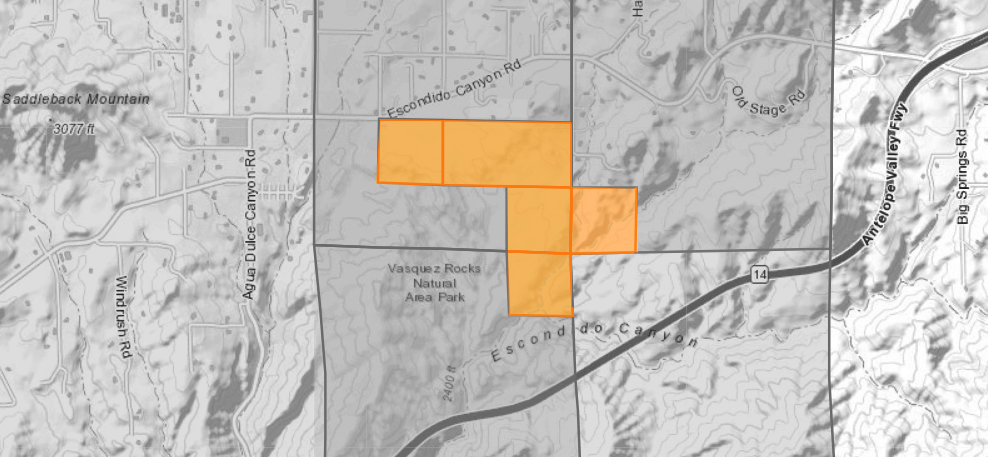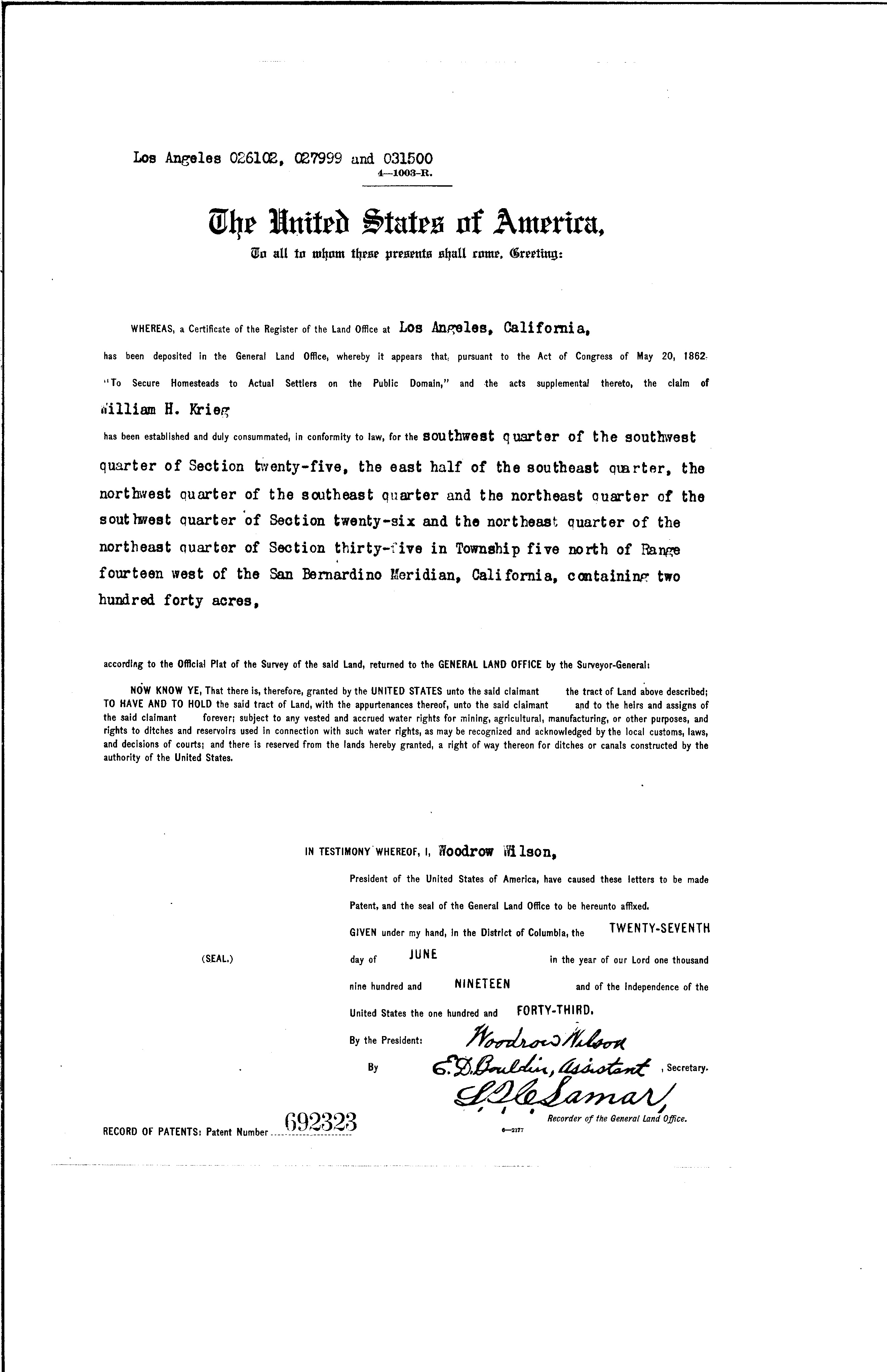Vasquez Rocks Marketing Brochure.
|
Webmaster's note. Vasquez Rocks marketing brochure from the early 20th Century when the rocks were privately owned. Undated; probably issued in the 1930s by homesteader William "Henry" Krieg or by his nephew, Ray Toney, who inherited the property after Krieg's death in 1937. The brochure capitalizes on the legend of the notorious bandit to attract tourists and/or film companies, which were major sources of subsistence income for the owners. It was probably Krieg — who arrived about 1910 (Rismanchi 2001) and received his homestead patent in 1919 (see below) — who gave the rocks their name. Part of the Sierra Pelona range, they were previously known as the Chicalopes, an anglicization of Francisco "Chico" Lopez. A prominent Angeleno, Lopez owned a large ranch in the latter half of the 1800s at Elizabeth Lake — which was called La Laguna de Chico Lopez before it was called Elizabeth Lake. Placerita Canyon gold discoverer Francisco Lopez was a cousin to Chico Lopez. Chico Lopez's ranch foreman was Chico Vasquez, brother of Tiburcio Vasquez. Odd, how Lopez's cattle and mules went missing when he was away from the ranch. Just how often Tiburcio Vasquez hid out at the rocks, we don't know. He did hide out in upper San Francisquito Canyon, near La Laguna de Chico Lopez. For a competent history of Tiburcio Vasquez, read Boessenecker 2010 or watch Boessenecker's video presentation. For the ownership and film history of Vasquez Rocks, watch Sarah Brewer's 7-part history. Brochure text follows.
Vasquez Rocks. A picturesque, swaggering bandit, feared by the early inhabitants of Southern California — stealing, killing, terrorizing — yet often seen in the role of a Robin Hood, only to finish his career at the end of a rope in 1875. That is the graphic picture we have of the notorious outlaw Tiburcio Vasquez. Often when capture threatened, he would retreat to his stronghold among the rocks three miles east of the Mint Canyon Highway — safe as if he had vanished from the face of the earth. Here may still be seen the smoke-blackened rocks, mute evidence of hidden campfires around which the bandits gambled and drank, toasting their chief. Today this spot, rich in romance, is famed for its natural beauty. It is reached, as indicated on the map, after a drive through one of the most scenic portions of Southern California. The mesa out of which the Vasquez rocks rise is thickly studded with juniper bushes and "Lord's Candle" — another name for the Yucca. This area abounds in excellent picnic places. Tiburcio Vasquez was born in Monterey County in 1837 [sic: 1835]. Was trapped in Greek George's place in Cahuenga Pass, was taken to San Jose, was tried, found guilty and was hanged in 1875.
AL2001: pdf of original brochure from collection of Dr. Alan Pollack. Download individual pages here.
|


